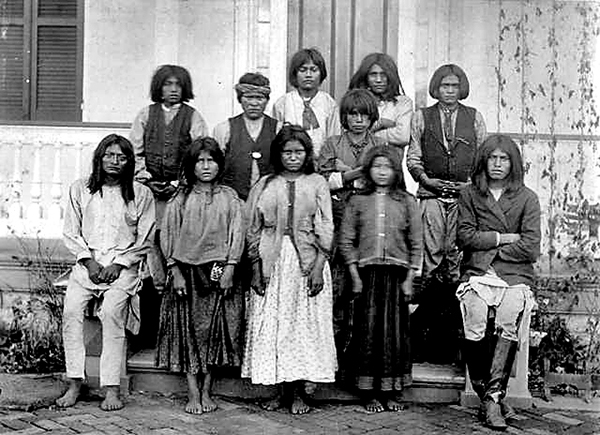

Samuel Torres of the National Native American Boarding School Healing Coalition was at a cemetery in Carlisle, Pennsylvania, in June, with a somber task: to return to Alaska the remains of Sophia Tetoff, 17, who had died in 1906.
She had died of tuberculosis at the Carlisle Indian Industrial School, the country's first government-run off-reservation boarding school for Native American children. Five years earlier she had been forcibly taken there at the end of a 25-day, 6,500-kilometer journey from her homeland by the Bering Sea.
As layers of earth were taken away and the top of the coffin was exposed, Torres, the coalition's director of research and programs, burned medicinal herbs, the sound of a traditional chant rising with the ascending smoke.
In the months before and after the repatriation of Sophia Tetoff's remains, the remains of more than 1,000 people, mostly children, were discovered on the grounds of three former boarding schools for indigenous children in Canada. What is little known is that in 1879, the year Carlisle opened, Canadian government representatives visited it and other boarding schools and returned to Canada lauding what was seen as a "humanistic and philanthropic way to solve the Indian Problem", to quote Torres, himself of Native descent.
"If we can't name the trauma, if we don't know the extent and scope of that trauma, we'll never heal from it," he said, referring to the history of the Native American boarding schools, operated for nearly a century until the 1970s under a US policy of assimilating indigenous people.
"To kill the Indian and save the man" was the mandate given to the Carlisle school by its founder, US army general Richard Henry Pratt. This was, Torres says, after centuries of genocidal war, in which Pratt had probably taken part, had failed to annihilate the race.
"Prior to this education-for-assimilation period, the federal policy toward Native Americans was extermination," Torres says. "There were wars, but there were also many massacres where the US army would go into native communities, wait for the hunting parties to leave and then kill the elderly, women and children remaining in the villages."